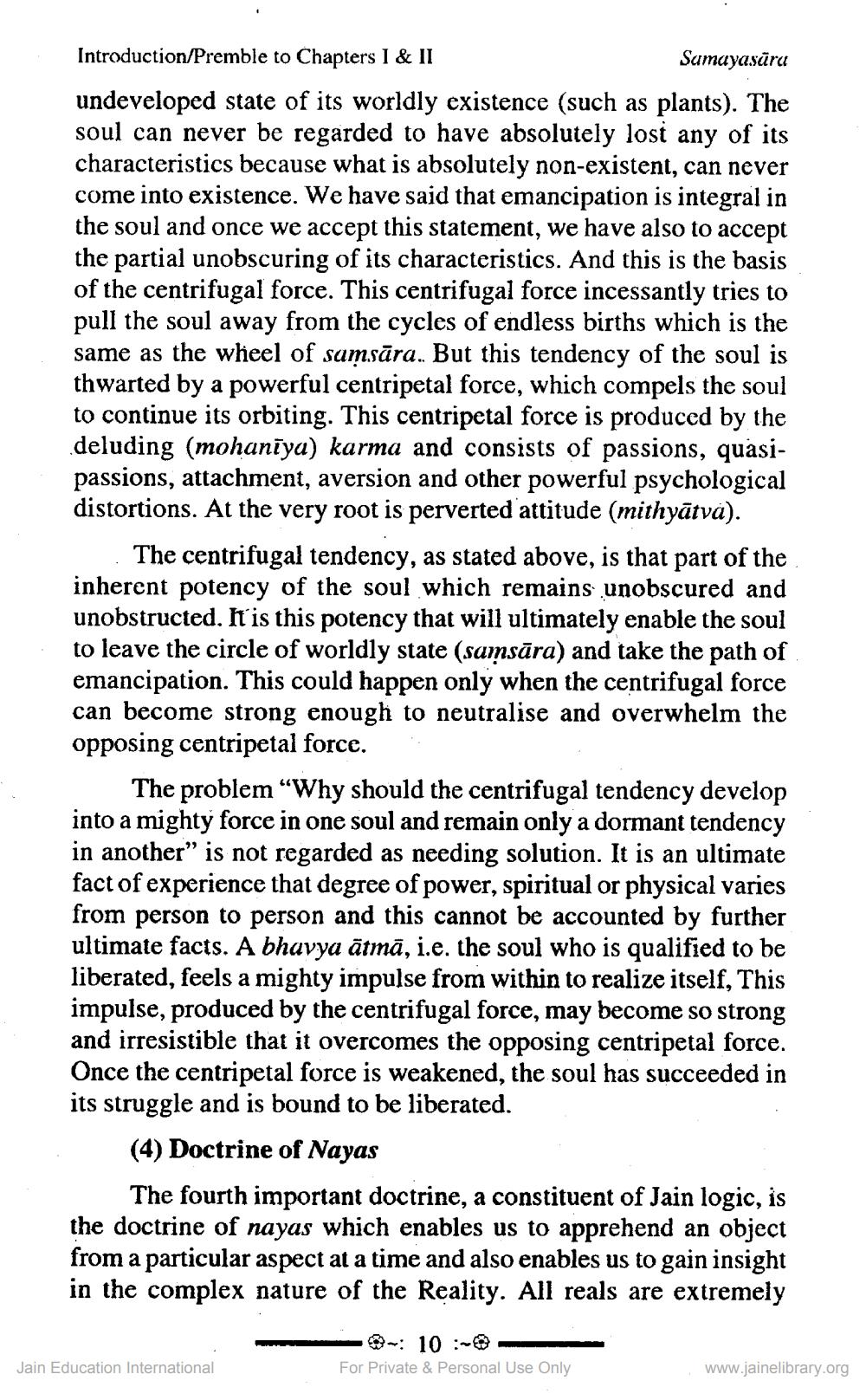________________
Introduction/Premble to Chapters I & II
Sumayasāra undeveloped state of its worldly existence (such as plants). The soul can never be regarded to have absolutely lost any of its characteristics because what is absolutely non-existent, can never come into existence. We have said that emancipation is integral in the soul and once we accept this statement, we have also to accept the partial unobscuring of its characteristics. And this is the basis of the centrifugal force. This centrifugal force incessantly tries to pull the soul away from the cycles of endless births which is the same as the wheel of samsāra.. But this tendency of the soul is thwarted by a powerful centripetal force, which compels the soul to continue its orbiting. This centripetal force is produced by the deluding (mohaniya) karma and consists of passions, quasipassions, attachment, aversion and other powerful psychological distortions. At the very root is perverted attitude (mithyātvá).
The centrifugal tendency, as stated above, is that part of the inherent potency of the soul which remains unobscured and unobstructed. H is this potency that will ultimately enable the soul to leave the circle of worldly state (samsāra) and take the path of emancipation. This could happen only when the centrifugal force can become strong enough to neutralise and overwhelm the opposing centripetal force.
The problem “Why should the centrifugal tendency develop into a mighty force in one soul and remain only a dormant tendency in another” is not regarded as needing solution. It is an ultimate fact of experience that degree of power, spiritual or physical varies from person to person and this cannot be accounted by further ultimate facts. A bhavya ātmā, i.e. the soul who is qualified to be liberated, feels a mighty impulse from within to realize itself, This impulse, produced by the centrifugal force, may become so strong and irresistible that it overcomes the opposing centripetal force. Once the centripetal force is weakened, the soul has succeeded in its struggle and is bound to be liberated.
(4) Doctrine of Nayas
The fourth important doctrine, a constituent of Jain logic, is the doctrine of nayas which enables us to apprehend an object from a particular aspect at a time and also enables us to gain insight in the complex nature of the Reality. All reals are extremely
Jain Education International
For Private & Personal Use Only
www.jainelibrary.org




